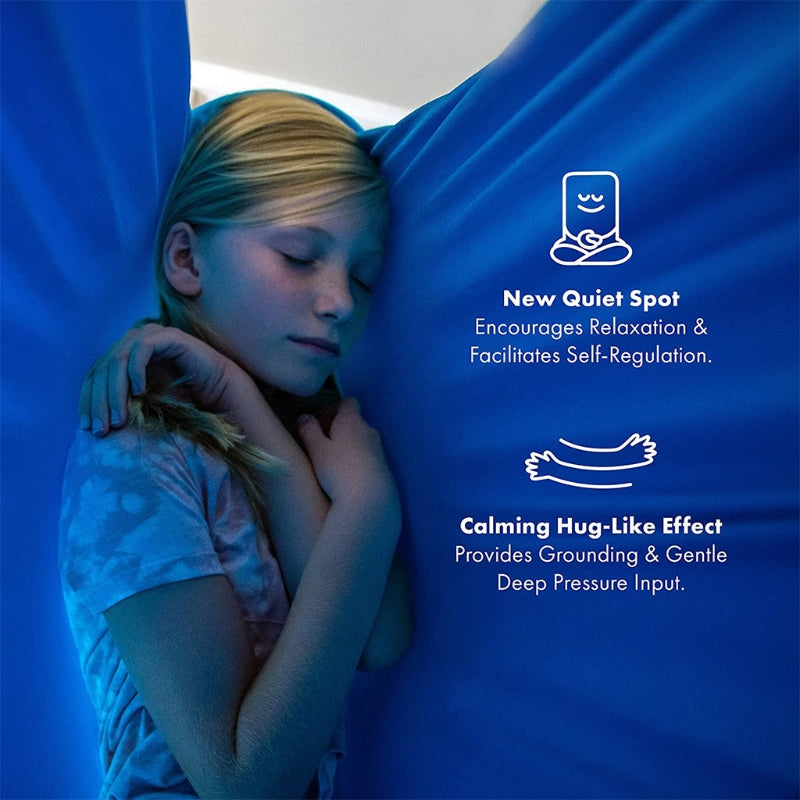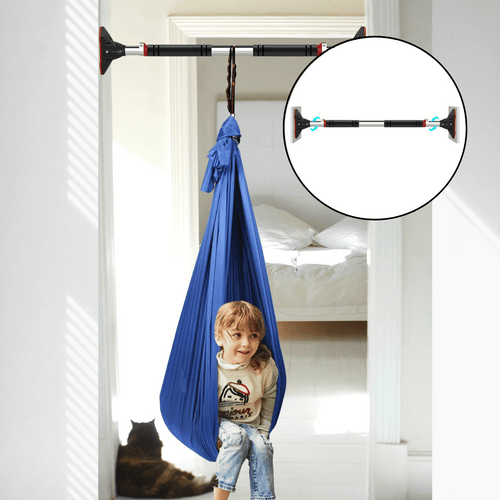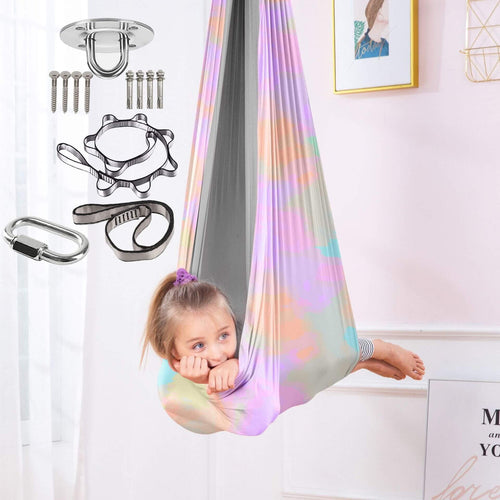In a world where stress and sensory overload are all too common, there is a growing interest in finding therapeutic methods to promote relaxation and calmness. One emerging trend that has captured the attention of both professionals and individuals seeking relief is sensory swings. These unique apparatuses provide a soothing and immersive experience that can have a profound impact on mental and physical well-being. This article explores the therapeutic benefits of sensory swings, delving into the science behind them and showcasing their potential to alleviate stress, anxiety, and even certain sensory disorders. From the gentle swaying motion that mimics the feeling of being in a hammock to the cocoon-like embrace that provides a sense of security, sensory swings offer a safe space for individuals to find solace and engage their senses. Join us as we delve into the swinging sensations of sensory swings and discover how they can provide a much-needed escape from the pressures of daily life.
Sensory Processing Disorder (SPD) is a condition in which the brain has difficulty receiving and responding to information that comes in through the senses. This can manifest in various ways, such as hypersensitivity to certain stimuli or difficulty processing sensory input. Individuals with SPD may experience heightened sensitivity to sounds, lights, textures, or movement, which can lead to feelings of overwhelm and anxiety. Sensory swings can be particularly beneficial for individuals with SPD as they provide a controlled and soothing sensory experience.
Research has shown that sensory swings can help regulate the nervous system and improve sensory integration. The gentle swinging motion stimulates the vestibular system, which is responsible for our sense of balance and spatial orientation. By providing controlled movement and proprioceptive input, sensory swings can help individuals with SPD better process and integrate sensory information. This can lead to improved focus, reduced anxiety, and an overall sense of calmness.
Sensory swings offer a range of therapeutic benefits for individuals of all ages and abilities. The soothing motion and cocoon-like embrace provided by sensory swings create a calming and safe environment that promotes relaxation and stress relief. The swinging motion stimulates the vestibular system, which in turn releases endorphins and promotes a sense of well-being. This can be particularly beneficial for individuals with anxiety, as the rhythmic movement of the swing can help regulate their emotions and provide a much-needed sense of tranquility.
In addition to promoting relaxation, sensory swings also offer opportunities for sensory stimulation and exploration. The different textures, materials, and positions of sensory swings engage the senses and provide a multisensory experience. This can be especially helpful for individuals with sensory processing difficulties, as it allows them to gradually increase their tolerance to certain stimuli in a controlled and safe environment. By providing a sensory-rich experience, sensory swings can help individuals develop their sensory processing skills and improve their ability to navigate the sensory world.
There is a wide variety of sensory swings available on the market, each with its own unique features and benefits. When choosing a sensory swing, it's important to consider the individual's specific needs and preferences. Here are some common types of sensory swings:
- Hammock Swings: Hammock swings provide a gentle cradling motion that mimics the feeling of being in a hammock. They are typically made of soft, breathable fabric and can be adjusted to different heights. Hammock swings offer a sense of weightlessness and can be particularly soothing for individuals with sensory processing difficulties.
- Cocoon Swings: Cocoon swings are designed to provide a snug and secure space for individuals to relax and unwind. They are often made of stretchy fabric or mesh and wrap around the body, creating a cocoon-like embrace. Cocoon swings offer a sense of security and can help individuals with anxiety feel grounded and protected.
- Platform Swings: Platform swings provide a larger surface area for individuals to sit or lie down. They are typically made of sturdy fabric or wood and can support more weight than other types of swings. Platform swings offer a spacious and comfortable space for individuals to engage in sensory activities or simply relax.
- Sensory Integration Swings: Sensory integration swings are designed to provide a variety of sensory stimuli. They may include features such as hanging toys, textured surfaces, or adjustable seating positions. Sensory integration swings offer a customizable sensory experience and can be tailored to individual needs.
When selecting a sensory swing, it's important to consider factors such as the individual's age, size, and specific sensory needs. Here are some guidelines to help you choose the right sensory swing:
- Size and Weight Capacity: Ensure that the swing is appropriate for the individual's size and weight. Most swings have weight limits, so it's important to check the specifications before making a purchase.
- Safety Features: Look for swings that have sturdy construction, secure attachments, and safety harnesses or straps. It's important to prioritize safety when using sensory swings, especially for individuals with mobility or balance issues.
- Comfort and Support: Consider the material and design of the swing to ensure maximum comfort and support. Soft and breathable fabrics are generally preferred, and adjustable features can provide a customized experience.
- Ease of Installation: Check if the swing comes with all the necessary hardware and instructions for easy installation. Some swings may require additional equipment or professional installation, so it's important to factor in these considerations.
By considering these factors, you can choose a sensory swing that meets the individual's specific needs and provides an optimal sensory experience.
Setting up a sensory swing can be a straightforward process, whether it's in a home or therapy setting. Here are some general steps to guide you:
- Select a Suitable Location: Choose a space that allows for safe and unrestricted swinging motion. Ensure that there is enough clearance around the swing to prevent any potential accidents.
- Install Mounting Hardware: Follow the manufacturer's instructions to securely install the mounting hardware. This may include hooks, chains, or brackets, depending on the type of swing and the structure of the space.
- Attach the Swing: Once the mounting hardware is in place, attach the swing securely to the hooks, chains, or brackets. Ensure that the swing is properly balanced and can support the individual's weight.
- Test for Safety: Before allowing anyone to use the swing, perform a safety check to ensure that all attachments are secure and the swing is stable. Test the swing by applying gentle pressure to ensure it can handle the intended use.
- Supervise and Monitor: When using a sensory swing, it's important to supervise and monitor the individual to ensure their safety and well-being. Provide guidance and support as needed and be aware of any signs of discomfort or distress.
Whether it's in a dedicated therapy room, a sensory integration clinic, or a corner of your living room, setting up a sensory







